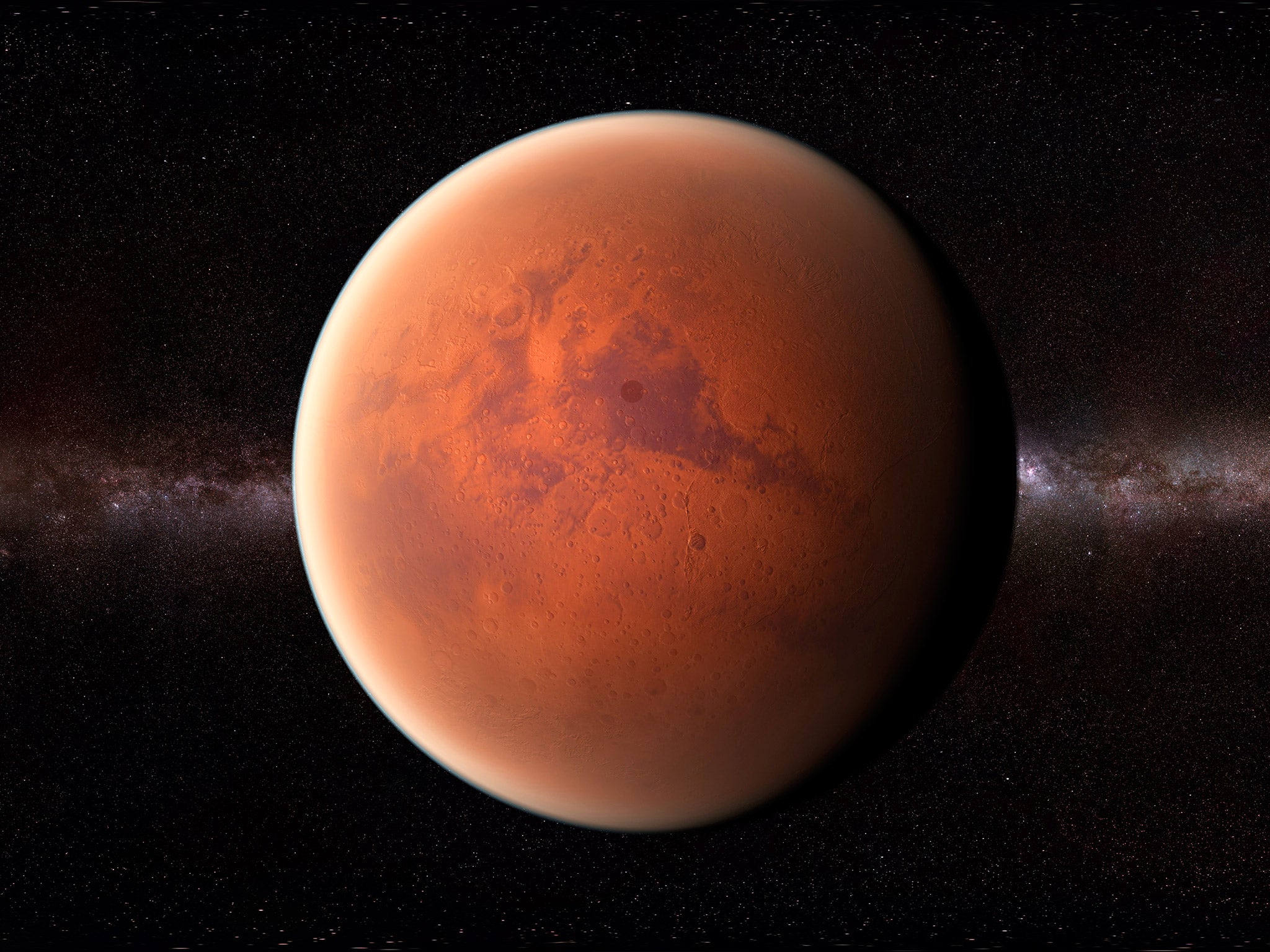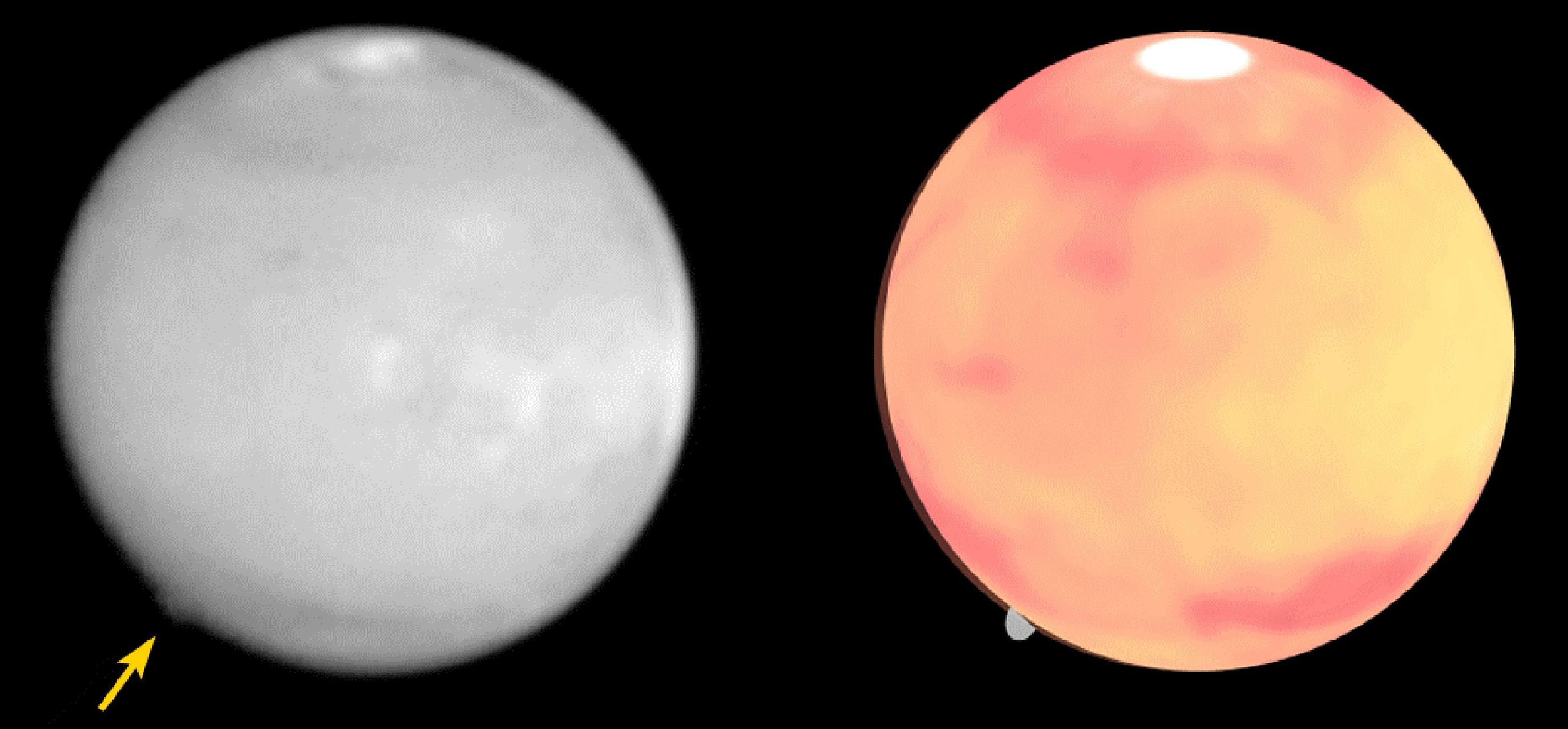Mysterious Martian haze 'raises more questions than answers', say scientists, and could change understanding of Mars' atmosphere
The plume looks like a puff of dust on the surface, but reaches up 250 kilometres off the red planet

A huge haze of cloud spotted above Mars cannot be explained by scientists and could change our understanding of Mars’ atmosphere.
The giant “bright, extremely high-altitude plumes” were spotted twice in 2012, but then disappeared. Scientists have analysed the haze, which is larger than any seen before, in an attempt to understand what caused it to happen.

The plume could be a very bright aurora or a large cloud, the scientists say. “Importantly, both explanations defy our current understanding of Mars’ upper atmosphere,” the authors of the new study write in Nature.
Scientists are unsure how either of the explanations could have happened.
"It raises more questions than answers," said Antonio Garcia Munoz, who works at the European Space Agency as a planetary scientist.
The most plausible explanation argues that the cloud was formed by pieces of frozen carbon dioxide or water vapour. But that would mean that Mars' atmosphere is much colder than previously thought.
The plume was first spotted by amateur astronomers in March 2012. It was seen by at least 18 of the Mars-watchers — though not by the imaging systems that’s on board the Mars Reconnaisance Orbiter, because of the time that they take pictures.
Scientists hope that probes floating around Mars will eventually see the plume. The next opportunity for amateur astronomers to see the plume is in 2016 — though at the most recent chance, in April 2014, astronomers didn’t spot any of the clouds.
It was seen again in April of that year. Research found that similar plumes had been spotted in databases between 2001 and 2014, discovering about 3,500 images depicting the haze.
Studying those images, the scientists found that the plume could be up to 225 kilometres tall.
Join our commenting forum
Join thought-provoking conversations, follow other Independent readers and see their replies
Comments